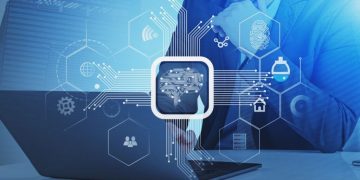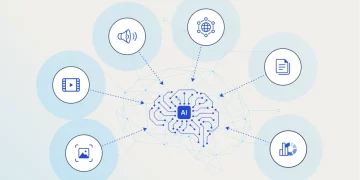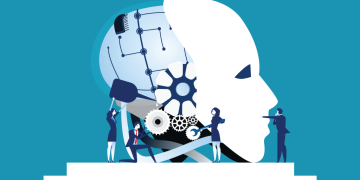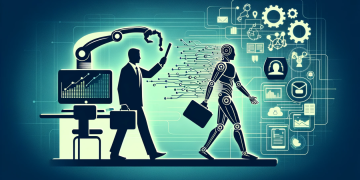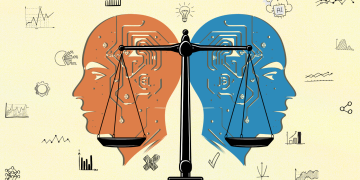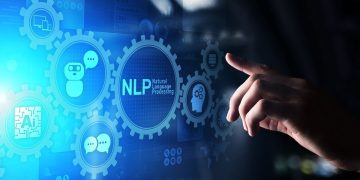Introduction:
In today’s competitive business landscape, companies are increasingly adopting Artificial Intelligence (AI) to streamline operations, enhance productivity, and reduce costs. AI can significantly improve operational efficiency by automating routine tasks, providing actionable insights, and enhancing decision-making processes across various functions such as customer service, marketing, supply chain management, and more. This article highlights some of the top AI tools that can help businesses optimize their operations and achieve better results.
1. AI Tools for Process Automation
One of the most significant advantages of AI is its ability to automate routine, repetitive tasks, enabling employees to focus on more strategic activities. These tools can be implemented across various departments such as HR, finance, customer support, and logistics.
1.1. Robotic Process Automation (RPA)
Robotic Process Automation (RPA) uses AI to mimic human actions and automate repetitive, rules-based tasks. Tasks like data entry, report generation, invoice processing, and payroll management are typical candidates for automation.
Popular RPA tools include:
- UiPath: UiPath is a leading RPA platform that helps businesses automate workflows. It integrates well with other enterprise systems and is suitable for large-scale automation projects.
- Automation Anywhere: This platform combines RPA with AI and machine learning, helping businesses automate tasks like data extraction, process workflows, and even customer service inquiries.
- Blue Prism: Known for its enterprise-grade automation capabilities, Blue Prism offers scalable RPA solutions for companies aiming to automate processes across various departments.
1.2. AI-Driven Workflow Automation
In addition to basic RPA, AI-driven workflow automation tools use machine learning to adapt and optimize workflows over time. These tools can improve operational efficiency by dynamically managing more complex processes.
Examples of AI-driven workflow tools include:
- Zapier: Known for its easy-to-use interface, Zapier enables businesses to automate workflows between over 3,000 apps. It can automate repetitive tasks like sending emails, creating records, and transferring data between platforms.
- WorkFusion: This platform combines RPA with AI and analytics to automate business processes like document processing, customer service, and data analysis. It is suitable for organizations looking to enhance end-to-end automation.
2. AI Tools for Data Analytics and Insights
Data is critical for making informed decisions, but processing and analyzing large datasets can be overwhelming. AI-powered analytics tools help businesses extract valuable insights from data, optimize operations, and make smarter decisions.
2.1. Predictive Analytics Tools
Predictive analytics uses AI and machine learning to analyze historical data and predict future trends or outcomes. By using predictive analytics, businesses can better anticipate demand, forecast sales, optimize inventory, and more.
Popular predictive analytics tools include:
- IBM Watson Analytics: IBM’s AI-driven analytics tool enables businesses to analyze data, discover patterns, and predict trends. Watson can automatically generate insights based on business data, making it easier for companies to make data-driven decisions.
- SAS Predictive Analytics: SAS is an advanced analytics platform that offers tools for predictive modeling, data mining, and optimization. It helps businesses improve forecasting, customer behavior prediction, and supply chain management.
2.2. Business Intelligence (BI) Tools with AI Integration
Business Intelligence (BI) tools help organizations analyze data and generate insights for decision-making. When integrated with AI, these tools offer enhanced capabilities like automated reporting, anomaly detection, and intelligent recommendations.
Top AI-powered BI tools include:
- Power BI with AI Features: Microsoft Power BI integrates AI to provide advanced analytics, such as trend forecasting and anomaly detection, within dashboards and reports. It’s especially useful for businesses looking to generate real-time insights.
- Tableau with Einstein Analytics: Tableau integrates AI-powered Einstein Analytics by Salesforce to provide predictive insights, automated data visualization, and intelligent recommendations for better decision-making.
3. AI Tools for Customer Service and Engagement
Providing excellent customer service is essential for any business. AI-powered tools can automate customer interactions, resolve issues quickly, and provide personalized experiences, thereby improving customer satisfaction and operational efficiency.
3.1. Chatbots and Virtual Assistants
AI-powered chatbots and virtual assistants can handle a wide range of customer service tasks, from answering frequently asked questions to processing orders and providing technical support. These tools can respond to inquiries 24/7, reducing wait times and freeing up human agents for more complex issues.
Popular chatbot and virtual assistant tools include:
- Zendesk: Zendesk’s AI-driven tools provide automated customer service workflows, including ticket routing, inquiry responses, and live chat support. It helps businesses enhance customer support operations and reduce response times.
- Intercom: Intercom uses AI to enable live chat support, lead qualification, and automation of customer communication. Its AI tools can resolve customer queries and pass on only the more complex issues to human agents.
- Drift: Drift is an AI-powered conversational marketing and sales platform that uses chatbots to engage customers, capture leads, and route inquiries to the appropriate sales team members.
3.2. AI-Powered Sentiment Analysis
Sentiment analysis uses AI to monitor and analyze customer feedback, reviews, and social media mentions to gauge customer sentiment about products, services, or brands.
AI-powered sentiment analysis tools include:
- MonkeyLearn: MonkeyLearn uses AI and machine learning to analyze customer feedback, social media posts, and reviews. The tool classifies text into sentiment categories (positive, negative, neutral) and helps businesses improve their products based on customer sentiments.
- Lexalytics: Lexalytics provides AI-driven sentiment analysis tools to help businesses analyze customer feedback, track brand reputation, and identify areas for improvement.

4. AI Tools for Sales and Marketing
AI tools in sales and marketing can help businesses identify leads, automate outreach, and personalize marketing efforts, ultimately boosting conversions and increasing revenue.
4.1. Sales Automation Tools
Sales automation tools leverage AI to improve lead generation, follow-up, and overall sales productivity. These tools can recommend the best actions for sales teams, predict sales opportunities, and prioritize leads.
Top AI-powered sales tools include:
- HubSpot Sales: HubSpot uses AI to automate email follow-ups, track engagement, and prioritize leads. It provides sales teams with personalized suggestions on how to close deals more effectively.
- InsideSales: InsideSales uses AI to help sales teams improve their prospecting process by identifying the best leads based on predictive analytics. It enables sales representatives to focus their efforts on high-value opportunities.
4.2. AI-Driven Marketing Automation
AI marketing automation tools help businesses create personalized marketing campaigns, segment audiences, and optimize their advertising spend. AI can predict customer behavior and automate content delivery to increase engagement and conversion rates.
Leading AI marketing tools include:
- Marketo: Marketo’s AI-powered marketing automation platform helps businesses deliver personalized content and offers, track customer journeys, and optimize campaigns.
- Hootsuite Insights: Hootsuite’s AI-powered social media management tool allows businesses to track social media performance, identify trends, and automate content scheduling and posting.
5. AI Tools for Supply Chain and Logistics Optimization
AI is transforming the way businesses manage their supply chains and logistics. By leveraging AI, companies can optimize inventory levels, forecast demand, reduce lead times, and improve delivery efficiency.
5.1. AI-Powered Inventory Management
AI-driven inventory management tools can help businesses optimize stock levels, prevent overstocking or stockouts, and ensure that the right products are available at the right time.
Top AI-powered inventory management tools include:
- Llamasoft: Llamasoft uses AI to help businesses manage their supply chains by providing predictive insights on demand, supplier performance, and inventory optimization.
- ClearMetal: ClearMetal’s AI-driven platform helps businesses optimize their inventory and improve demand forecasting by analyzing historical data and real-time information.
5.2. Route Optimization for Logistics
AI-powered logistics tools help businesses optimize delivery routes, reducing fuel consumption, delivery times, and costs. By analyzing traffic data, weather conditions, and other variables, these tools can suggest the most efficient routes for drivers.
Leading logistics AI tools include:
- OptimoRoute: OptimoRoute uses AI to optimize delivery routes in real-time, helping businesses improve their fleet efficiency and reduce transportation costs.
- Routific: Routific is an AI-powered route optimization tool that helps logistics companies plan the most efficient delivery routes, reducing operational costs and improving customer satisfaction.
6. AI Tools for Human Resource Management
HR departments can also benefit from AI, particularly when it comes to recruiting, employee engagement, and performance management.
6.1. AI-Powered Recruitment Tools
AI can help HR teams screen resumes, shortlist candidates, and even conduct initial stages of interviews using natural language processing (NLP) techniques. This speeds up the recruitment process and ensures that the best candidates are identified quickly.
Leading AI recruitment tools include:
- HireVue: HireVue uses AI to assess candidates based on video interviews, analyzing speech patterns, facial expressions, and language to predict candidate success.
- Pymetrics: Pymetrics uses neuroscience-based games and AI to match candidates with roles based on their cognitive and emotional traits, helping companies identify top talent.
Conclusion
AI is transforming business operations across industries by helping companies automate processes, gain valuable insights from data, enhance customer engagement, and optimize various functions such as sales, marketing, supply chain, and HR. By integrating AI-powered tools into their operations, businesses can not only improve their efficiency but also stay competitive in a rapidly evolving marketplace. The key is selecting the right tools based on the specific needs of the business and continuously refining AI models to adapt to new challenges and opportunities.







